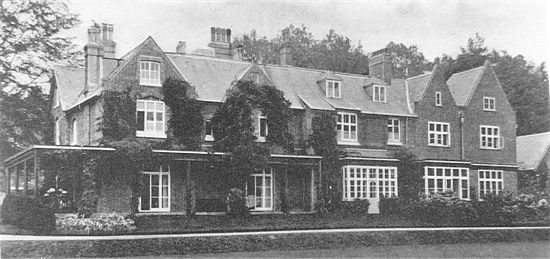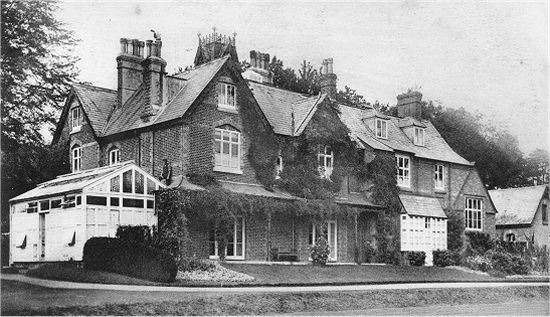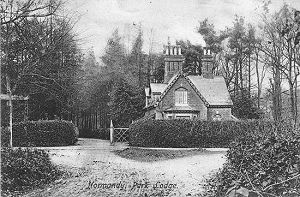|
Normandy Park was one of the smaller country estates in Normandy. It lay to the north of the Pirbright to Aldershot road and originally extended from the foot of Dolleys Hill in the east to Rands Plantation in the west , within 500 yards of the junction with the Guildford Road at Elm Hill. The house stands well back from the road behind a screen of trees, and, perhaps, would not be noticed by the casual passer-by. During the course of the Agricultural Revolution in the 18th century, it was discovered that the Scots Pine would thrive on the poor soils of the Surrey Heath and many holders decided to establish plantations of this hitherto alien species to profit from their otherwise unproductive land. In 1803 an Act of Parliament authorised the enclosure of parts of the common land, north of the Pirbright Road within the Manor of Wyke. William Newland, a physician of Guildford, bought a 50 acres plot, which was to become Normandy Park. His object being purely commercial, he had the land planted with Scots Pine and it became known as Newland's Plantation. In 1805, William Newland acquired from Daniel Dolley one and a half acres of land on which there was an old cottage. This plot was just over the border within the Manor of Cleygate, and so he became subject to two Lords of the Manor. William Newland died in 1848 and his property descended to his daughter, Mary Ann, but in 1861 it was decided to put the estate up for sale and at an auction in London it was bought by George Bean, an architect to the Surveyor General of HM's Prisons George Bean was determined to turn the plantation into a country estate and in about 1868 a section of the trees was cleared and a platform on which to build a house was cut into the steep hillside looking south to the road. The first house was comparatively modest in proportions being approximately the size of the present western part of the house called The West Wing. There was a large conservatory facing south and probably some outbuildings, including a stable. A lodge at the gates of the main drive was also built. Certain features such as the arched window heads suggest that William Henry Coussmaker was the architect but George Bean may also have had a hand in the design George Bean died in 1873 leaving all his property to his wife, Harriott. Part of the estate fronting the road had been established as a market garden and a pair of semi-detached cottages called The Oaks built. At about the same time another pair of cottages called The Firs was built at the south-west corner of the estate. Shortly after, the Oaks holding was divided in two and the eastern part of 13 acres was named Normandy Park Nursery. In about 1895 a middle portion to link the original house to an outlying portion was built, the conservatory was removed and another one was built at the west end of the house. An elaborate gazebo was erected on a flat part of the main roof. In 1878, Harriott Bean mortgaged the estate and moved to Chertsey. There was then a succession of tenants at the house.
Harriott Bean died in 1896 and in 1897 Uriah John Wright, the only surviving Trustee and Mortgager decided to sell off part of the estate. All the part westward of the main drive was divided into lots and these were sold at auction. In 1903, Philip Gutterez Henriques, a rising lawyer, bought the house and what remained of the estate and in 1908 he commissioned the young Clough Williams Ellis, later to find fame as the creator of Portmerion, to design a new east end to harmonise with the original part of the house. The old east end was partially demolished and the present East Wing with gables to match those of the original house was erected. Philip Henriques received a knighthood after the First World War during which he served in Government. He died in 1950, his widow following in 1952, and the property descended to their nephew, Claude Arthur Lucas. In 1953 he sold it to Professor Hywel David Lewis, Professor of the History and Philosophy of Religion at the Universities of Aberystwith and London. He had the house converted into three apartments and took up residence in the West Wing.
There is much more about the estate and the houses and people associated
with it in the book "A History of Normandy Park in Surrey" by
Jack Kinder, containing 114 pages and numerous plates, tables and figures
and is now Available
|



